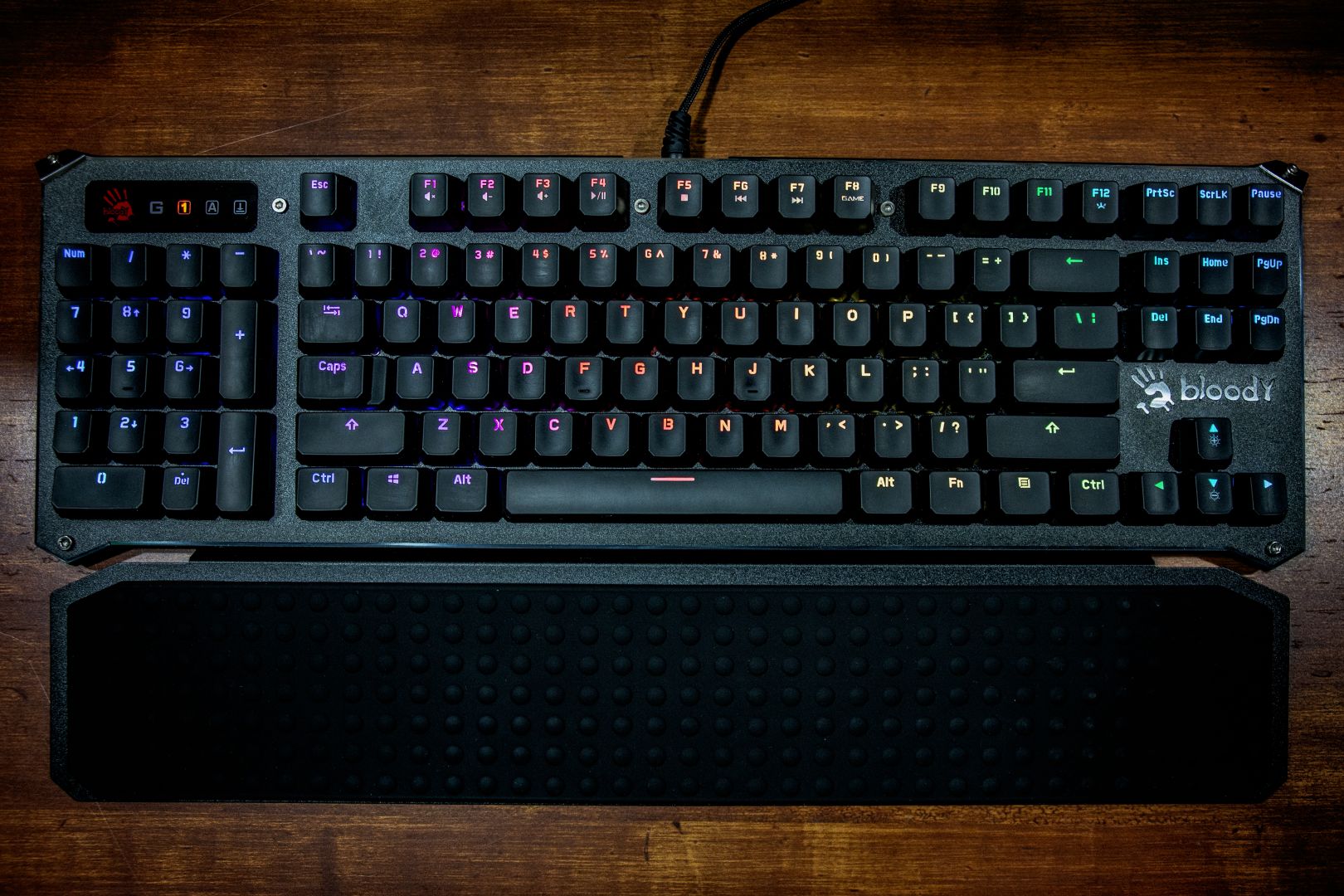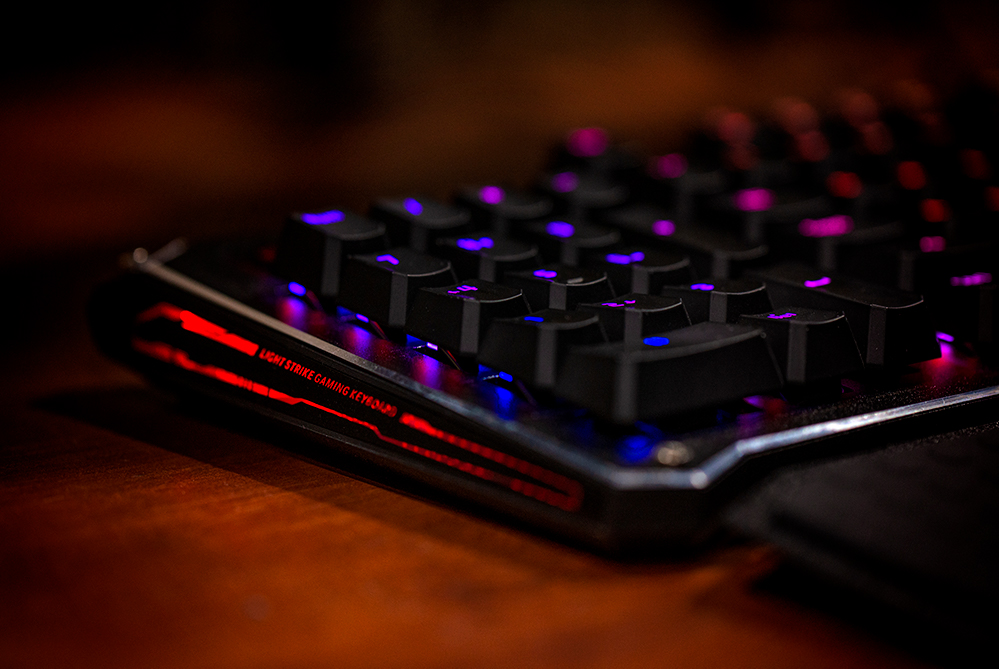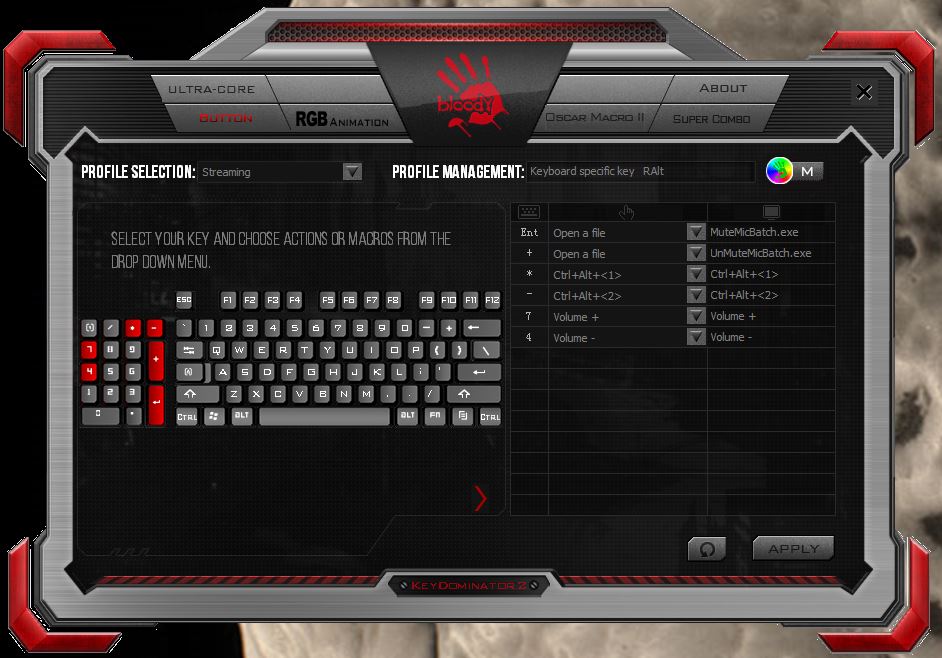Optical switches are the new craze in the PC peripheral world, and due to their laser precision and lightning fast speed, the technology is marketed heavily to the gaming community. But does it stand up to the hype? I tried out a mouse and keyboard combo from Bloody to see if I could get to the bottom of that question.
I won’t bore you with the excruciating details about how optical switches work, why they’re faster than traditional mechanical switches, why dumping a Mountain Dew on an optical keyboard won’t ruin it (probably), or how the switches seemingly last forever. Long story short, the optical switches actuate at 1.5mm (vs 2.0-2.2mm), respond as quickly as 0.2ms (vs 30ms), and since there’s no metal-on-metal contact or electricity flowing through the switches, you can literally submerge a Bloody keyboard in water and it will still work. That also means the switches will last longer than traditional mechanical switches that rely on a physical connection to fire.

I spent a couple months working and playing with a Bloody B945 Light Strike Optical Gaming Keyboard, and a Bloody SP80 Professional Light Strike Optical Gaming Mouse. Light Strike is Bloody’s brand of optical switches, and both peripherals take advantage of this technology. Let’s dive into the B945 keyboard first.
The B945 keyboard carries all of the standard features you find in a gaming keyboard. A couple style options of mechanical switches (clicky or linear), fully programmable keys, a game mode to prevent catastrophic Windows-key presses, and a plethora of lighting features. In fact, most of the Bloody keyboard line includes these features, as well as touting a diamond cut aluminum body, which is as attractive as it is solid.

What makes the B945 unique in Bloody’s line of keyboards is the left-side numpad. At first I assumed this keyboard was designed for left-handed gamers, however, the Bloody rep quickly pointed out that the left-side numpad has several advantages for all gamers. First, it puts your hands closer together which for most people is more ergonomic. They’re right, I was definitely more comfortable with the numpad out of the way. Second, if you do need to use the numpad, it not only keeps your right hand on your mouse, but it also puts the numpad much closer to your left hand, which is already on the keyboard. Finally, it puts a whole block of keys that are typically not used in games in a convenient place for assigning macros or other shortcuts. In lieu of dedicated macro keys, this is a great use for the left-side numpad. I programmed several of the numpad keys to functions I frequently use when streaming to Twitch. I can easily start or stop the stream, mute or unmute my mic, or switch scenes or sources with a quick shift of my left hand. I utilize the numpad frequently in my line of work, so switching to a left-handed numpad took a bit of practice, but I’m quickly getting used to it.
The keyboard functions very well, in fact, it’s easily the best feeling keyboard I’ve used for typing on a day to day basis. Initially I had the occasional double-press as my fingers got used to the seemingly weightless springy feeling, but after just a few weeks, those incidents were very rare. Since there’s less travel and less resistance of these keys compared to keyboards I’ve used in the past, the keyboard does feel faster when typing. After being spoiled by the B945 at my home office, I have a rough time going back to my old membrane keyboard at my work office, or my laptop keyboard anywhere in between. The Light Strike optical switches feel great, and I can’t see myself going back to a traditional mechanical or membrane keyboard after experiencing the difference. On the gaming front, the keyboard feels as responsive as you would expect, and the programmable keys work great. I wish there were a few dedicated keys for switching profiles, on-the-fly macro recording, and maybe a few macro keys, but as I mentioned earlier, the left-side numpad mostly makes up for this.
Unfortunately, the biggest issue I see with either peripheral isn’t with the hardware, it’s the software. Bloody is a Taiwanese company with a subsidiary in the US, and it is very clear that the software is developed for the Asian markets. The terminology used in the software is translated from its native language (presumably some form of Mandarin), and sometimes so poorly that it is difficult to understand what certain buttons in the interface do. It wasn’t until I watched several YouTube videos of people walking through how to configure the peripherals that I was finally comfortable clicking around in the interface without fear that I’d accidentally overwrite a portion of the configuration that I needed. The design of the software itself is not bad, in fact I’d say it was probably good in its native language, but it’s intuitiveness was literally lost in translation. That being said, once I understood what I was doing, the macro building functions are quite powerful and easy to manipulate. The GUI is also, to be frank, ugly, but the gaming market has historically chosen flashy/gaudy designs that I rarely agree with, so perhaps that’s just me. The important part is that the software functions well once you understand it.
Overall, the B945 keyboard is a solid option if you’re looking to step up to an optical keyboard. It touts a sleek design, plenty of features for most gamers, and a more ergonomic left-side numpad. The only issue worth mentioning is the frustrating software design and poor translation.

